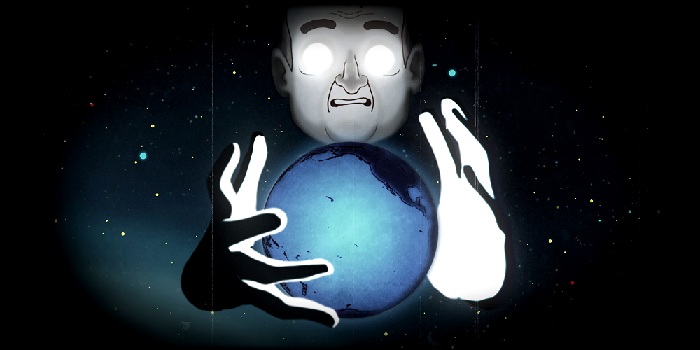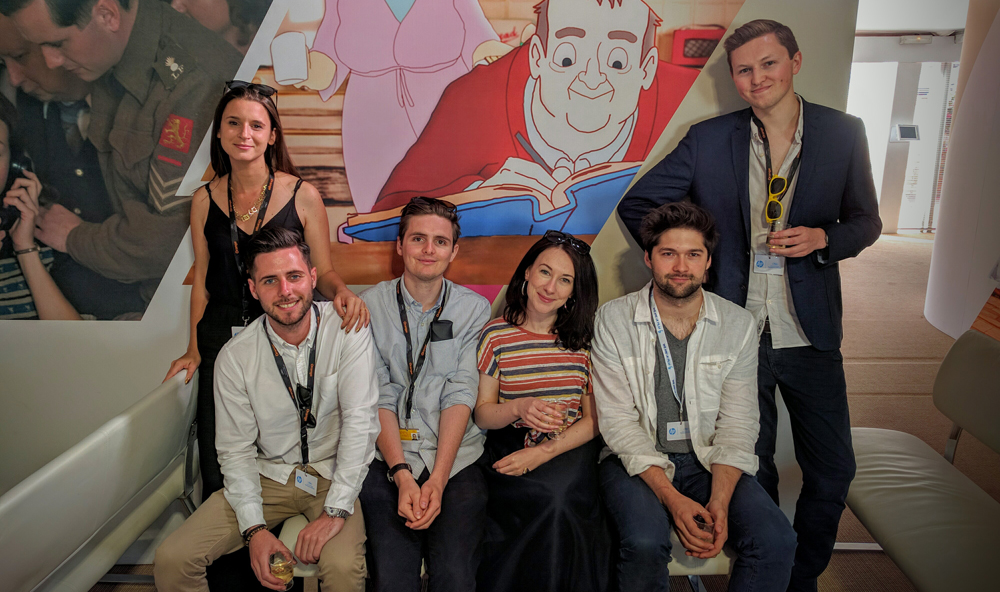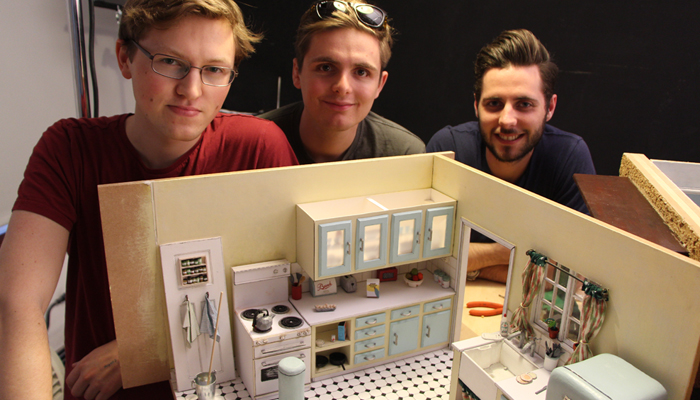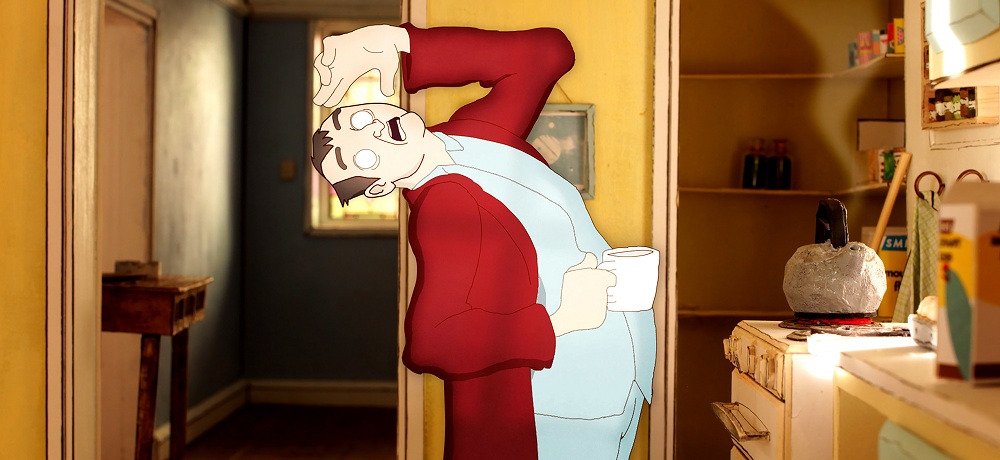The British Academy of Film and Television Arts (BAFTA) is known for identifying and inspiring practitioners of the art forms of the moving image and this year, in its British Short Animation category, out of the three nominations, two films are made by the students of the renowned National Film and Television School (NFTS).
Since the past three years, NFTS students have bagged this category award and this is the second consecutive year that two of their students’ graduation films are competing for the same prize.
The short films which have been nominated are The Alan Dimension (directed and co-written by Jac Clinch) and A Love Story (directed by Anushka Naanayakkara).

AnimationXpress got in touch with the director and co-writer of The Alan Dimension, Jac Clinch to gain more insights on he went about creating the short, the techniques used, challenges faced and the overall experience.
What was the whole idea behind coming up with this short?
The character of Alan, a retired accountant who can see the future, came from my own experience of deja vu. When I feel like I’ve dreamt of a moment before it has happened, a small voice in my head thinks ‘maybe I have seen the future’! Unfortunately these visions concern incredibly mundane and routine occurrences. I found it funny that such a miraculous, time-space-continuum-defying ability would be used to foresee what’s for breakfast next Tuesday, for example. And so Alan was born, a fool with a divine gift. At the National Film and Television School I shared the idea with my co-writer, Jonathan Harbottle, and producer, Millie Marsh, and together we worked up a story around his character.

How many people have worked on the film?
I have mentioned Jon and Millie. After developing the idea with them, we pitched to all the departments in the school: Production Design, Cinematography, VFX, Editing, Composing, Sound Design and Production Management. Eventually the directors amass a team of filmmakers for their project. I was fortunate to work with, respectively, Declan O’Brien, Miles Ridgway, Luke Hardistings and Matt Moyes, Xanna Ward Dixon, Tim Morrish, Justin Dolby and Anna Bennett Squire, as well as many other contributors.
How did you go about with the script?
I chose to work with a co-writer, Jonathan Harbottle, and together we would bounce ideas off each other and see what made us laugh. There were a lot of possibilities with a man who can see the future, so it was about choosing the story that best explored Alan’s relationship with Wendy, but also highlighted the absurdity of his gift. The script came together quite quickly once we established the rules of Alan’s power.
Walk us through the storyboarding process.
Storyboarding started very soon after scripting and the two developed simultaneously, with certain images feeding back into the script and inspiring new plot elements. I had previously studied a course in illustration at Kingston University and love comics, so storyboarding is one of my favourite parts or the process, drawing the story and adapting to feedback. Although I have to resist drawing too many images and dipping into animation!
I began storyboarding on post-it notes, and when there became too many I switched to digital, so they could be quickly swapped into the animatic. However, many of the original post-it notes stayed through to the final edit before animation began.

Which medium and software did you use to bring Alan’s tale to life?
The Alan Dimension is a combination of stop-motion, 2D and CG animation. We first built the model set and shot an empty film with no characters, but with moving doors and objects. Then we used Adobe Flash to animate the 2D characters and composited them in with Aftereffects. The VFX artists used a technique called photogrammetry to create the spectacular transitions into space.
What did you aim to portray through the film?
I initially wanted to create a character-driven comedy, that contrasted grand, epic science fiction with the prosaic mundanity of domestic life. However, the relationship between the characters became far more important than the sci-fi element, and the emphasis switched to being present with one’s partner. Alan’s obsession with time causes him to neglect Wendy, but its a problem that many couples can run into: becoming accustomed to your partner means it’s easy to forget them in the pursuit of your own interests.
We approached the precognition as any other hobby, Alan could just as well have been obsessed with gardening. It just happens to be ‘subverting the linear nature of the time-space continuum’!
What was the most challenging part during the creation of this film?
On a technical level we ran into a few head scratchers, as ‘The Alan Dimension’ mixes 2D characters with a stop-motion model set and CGI VFX. One particularly hard shot depicts Alan entering a ‘vision’, the walls surrounding him crumble and break away into space. This combined a complex camera movement, whilst VFX dissolved the model set around a 2D animated character. Aardman kindly offered us their motion control camera, however this meant disassembling the whole set and transporting it all down to Bristol for a day of shooting! The VFX guys used photogrammetry to create a photo-realistic 3D replica of the set which they could distort and break apart. Then I had to animate a character turning with the camera motion. That scene was a real technical puzzle but it was a relief to see the pieces finally fit together.

On which project are you headed next?
I really enjoyed the writing process of ‘The Alan Dimension’ so I’m working up some new ideas as well as directing some animated sequences. I’m am currently putting the finishing touches to my first live-action short, which I wrote and directed for Channel 4’s Random Acts and Screen South. Set in a hybrid hairdressers / restaurant, diners receive a smart haircut whilst they eat. Unfortunately the meals get covered in hair and events take a surreal turn. The animator in me had to resist micromanaging the actors’ every move, but it was a fantastic opportunity to adapt my directing skills to live-action, and also to reunite with the team behind ‘Alan’.
Share with us your overall experience while working on this film.
It was the largest project I had ever undertaken, and it was very challenging at times, especially through the long months of animating with no sunlight. Having said that, I loved collaborating with a team of such talented filmmakers, and screening it to audiences around the world is very rewarding.
How was the support provided by NFTS?
I feel very lucky to have had the support of the NFTS. I had wanted to go to the school before I even thought animation was a possibility for study, so when the opportunity came I was thrilled. What sets it apart is the collaborative nature of the courses – a way of working that I was not used to prior to attending. Students and tutors all contribute to the films and support them throughout production and beyond.
Whether the film will bag the award will be revealed on 12 February, 2017 during the BAFTA Awards ceremony.
